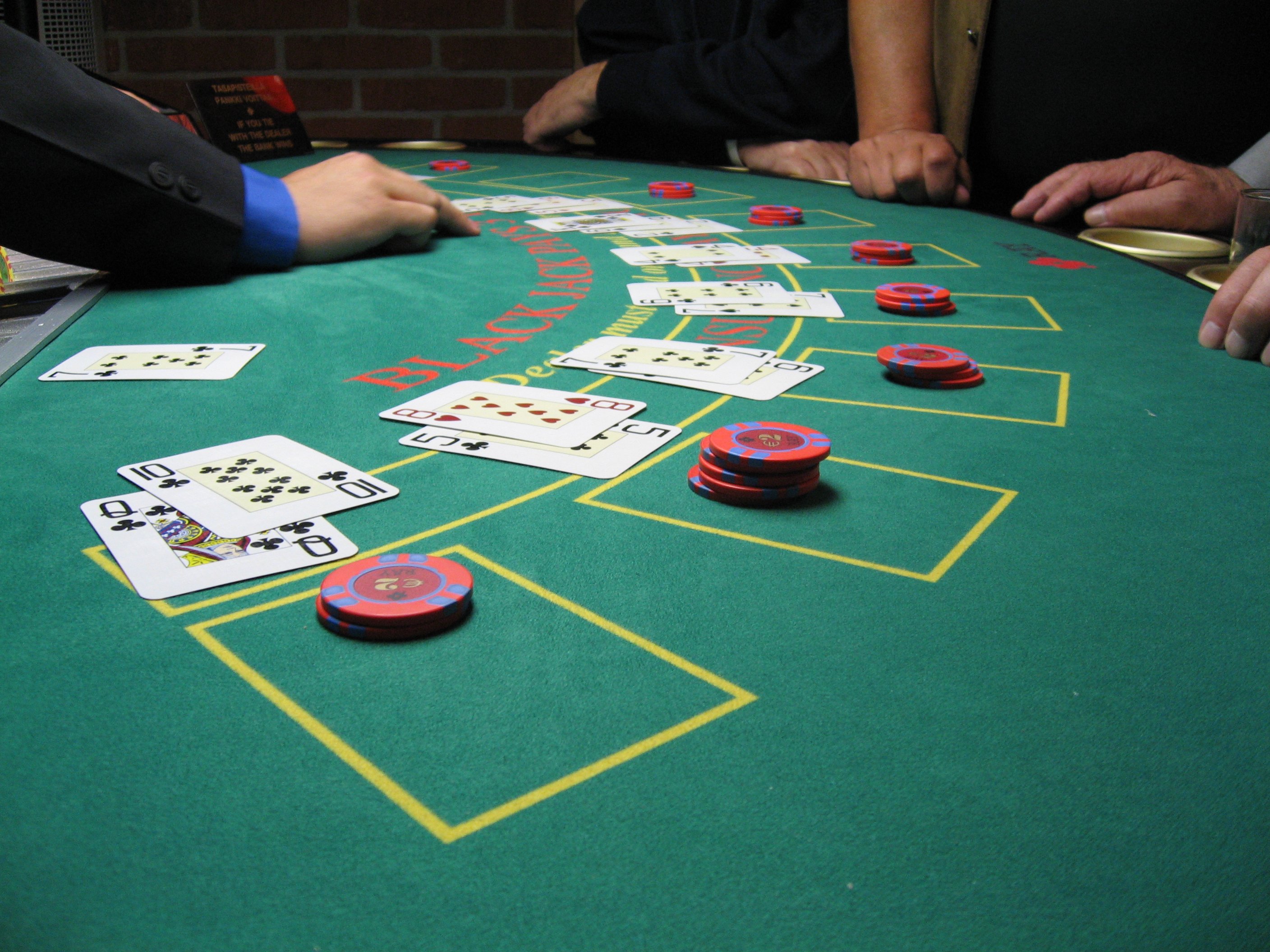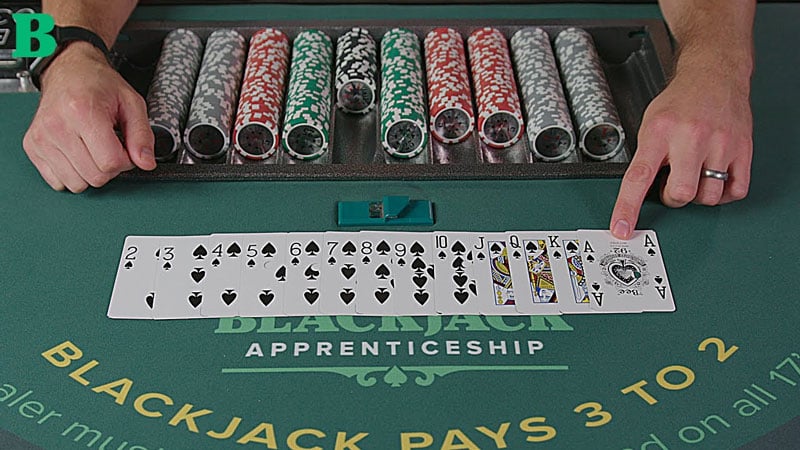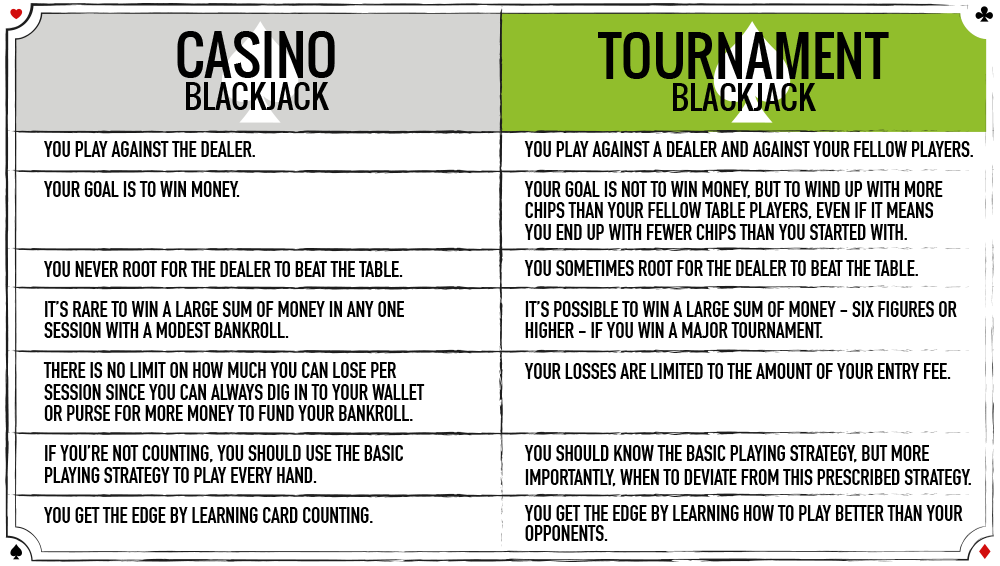Tips for beating one of the world’s toughest card games
By J. Phillip. Vogel
Like many of our favorite casino games, the exact origins of blackjack are forever lost to history. One of the first recoded descriptions of the game places its appearance in France during the 17th century, where it thrilled gamblers under its simple, yet appropriate appellation “vingt-et-un.” Some gaming historians, however, contend that rather than originating in France, vingt-et-un was nothing more that a variation of Spain’s already popular game “One and Thirty” or perhaps even a spin-off of Italy’s baccarat.
Regardless of its origins, so popular was the game that it quickly emigrated globally, taking on slight changes in both name and rules to suit regional appetites. In Russia, the game was called “Ochko” (roughly translated as “the hole’). In England, where players were rewarded for drawing both the jack and ace of spades as their first two cards, it became known as “blackjack.” But whether it’s “21” “California Aces” or even “Ochko,” blackjack continues to be one of gambling’s perennial favorites.
- Blackjack strategy charts are the most popular and effective way to learn basic strategy. The chart contains rules and permutations which can be directly used in any online blackjack game, as well as some land-based casinos.
- A standard basic strategy chart can only provide you with the strategy for one set of rules, such as dealer hits on soft 17, limiting your mastery to just one game. Our Blackjack Basic Strategy Engine allows you to quickly adjust the rules with the click of a button, calculating the optimal strategy for your selected game. The engine’s easy-to-read charts detail the strategy for all hard totals, soft totals, and pairs.
Blackjack basic strategy involves understanding odds to turn the house edge in your favor. Blackjack has different gameplay options that can improve a player’s basic strategy. Blackjack is a highly loved Game in large part for being one (if not the) most strategy-oriented Casino Games in existence. Blackjack is a negative expectancy game, meaning you will lose money over time as the casino has an edge over you. If you want to lower that edge, then your best bet are the different blackjack charts found below. The house edge in Blackjack is 8%. If you’re an active player that number will add up over time. The basic strategy for Multiple-Action blackjack (and similar games) is the same as regular blackjack. READING THE BASIC STRATEGY CHART (S) Dealer’s up-card is shown along the top of the chart. Player’s hand is shown vertically on the left side of the chart.
Blackjack Basics
In its most basic form, blackjack is one of the easiest casino games to learn. The objective is to attain a hand value that is greater than that of the dealer, yet does not exceed 21. It can be played using anywhere from one to eight standard decks, with cards of rank 2 through 10 scored according to their face value, while face cards—jack, queen, and king—are valued at 10 points. Aces can be worth either 1 or 11 points. The game is further governed by the following rules:
- Players win if their hand has a greater total point value than the dealer’s, without going over 21.
- The best possible hand is called a blackjack. It consists of an ace and any 10-point card. A winning blackjack pays 3:2.
- If both the player and the dealer have a tie—including with a blackjack—the bet is a tie or “push” and money is neither lost nor paid.
- All other winning hands pay even money, 1:1.
- If either the player or the dealer exceeds 21 or “busts” the hand automatically loses.
- If both the dealer and player bust, the player loses.
A round of blackjack begins with the player placing a bet in the circle or designated betting area in front of him. Every player will then be dealt two cards (both typically face up) while the dealer receives two cards, one of which is exposed and the other (known as the “hole” card) face down. If the dealer has a ten or an ace exposed, he will check for blackjack, in which case all player hands lose, except another blackjack. However, should the dealer have an ace exposed, players may take “insurance,” a side bet that pays 2-1 and hedges the initial bet against a dealer blackjack.
If the dealer does not have blackjack, play continues starting with the player seated immediately to the left of the dealer. The following options are then available:
Stand. If the players decide their hand is sufficiently strong, they may opt to take no additional action.
Hit. Players may draw additional cards until they either bust or decide to stand.
Double down. If players hands warrants, they may opt to double their current bet and receive one additional card. This option is only offered on the first two cards, and in some cases on the first two cards after splitting.
Split. When a player’s first two cards are of equal point value, he may separate them into two hands with each card being the first card of a new hand. To split, the player must make another wager of equal value to the initial wager for the second hand. In cases where another identical point valued card is dealt following the split, re-splitting may be allowed. (Re-splitting aces is often an exception.) When allowed, players may also double down after splitting.
Surrender. In certain versions of blackjack, players may surrender or yield a poor hand on their first two cards, rather than play against a potentially superior hand. Surrendered hands return ½ of the wager to the player.
Once all players have acted, the dealer will then complete his hand. Unlike players, the dealer has no freedom to determine the best course of play and must abide by the house rules which govern all actions. Usually the dealer must hit until his cards reach a total value of 17 or more. In some casinos or game versions, if a dealer is dealt a soft 17 (an ace plus cards totaling six additional points) he must also hit. If the dealer busts, all players active in the hand win automatically.

Basic Strategy
Despite its simplistic premise, blackjack is one of the most difficult games in the casino. But with an extremely low vigorish—sometimes reaching 0.18%—it can also be one of the most profitable. Or at least it is if you master basic strategy.
Although daunting and at times confusing, basic strategy is really nothing more than a breakdown of the optimal way to play every possible situation based on the house’s rules, your current hand and the dealer’s exposed card. Table A and Table B are a sample basic strategy table for use with multiple deck games.
Remember, optimal basic strategy varies with the version of the game you play, and there are tables such as these that outline exactly what action to take given the circumstances. And while they may be challenging to memorize, if making money as a blackjack player is your ultimate goal, there’s simply no other option.
Strategies to avoid
A lot of new players can be taken in by seemingly sound strategies that actually have no real place at the tables. Avoid the following dangerously ineffective methods:
Play as the dealer plays. Some people think because the house has an edge on the game that by playing according to the dealer’s rules (such as always hitting 16 or less, or never doubling or splitting) that same edge will apply. Wrong. Remember, the player acts first, and even if both you and the dealer bust, the house wins the hand. Such strategy results in a house edge of approximately 5.5%
Martingale System. Some players advocate an age-old, misguided betting system design ostensibly to guarantee winning. Called the “Martingale System,” this method requires players to double their bet for every hand following a loss. The theory is that by doubling the bet you will eventually win a hand and recoup any previous losses. Although it sounds powerful, this system is flawed and ineffective, and fails to take into account high-risk bets, a moderately bad run of cards, and table limits.
Never draw to a hand that can bust. Rather than take a card that could break the hand, some players prefer to always stand pat on hard totals of 12 or more. Such play is harmful in the long run and results in a vigorish of approximately 4%.
Although these and many other half-baked strategies may sound good in theory, at best they’re mildly innocuous and worst devastating. Stay clear of tricks and systems and stick with basic strategy, the only proven method of minimizing the house’s edge.
Variations on a Theme
While the traditional version is often the game of choice among blackjack enthusiasts, there are many other exciting and profitable variants available in both traditional and online casinos. Although the basic premise for each variation is akin to traditional blackjack, each has its own set of rules and strategy.
Game: Blackjack Double Exposure
Basic Rules: Offers many of the same traditional blackjack rules except: Both dealer cards are exposed, dealer wins all ties except on a natural blackjack, players may split only once, player blackjack pays 1:1.
Game: European Advanced Blackjack

Basic Rules: Available in regular and high limit versions. In this double-deck game blackjack pays 3:2, the dealer stands on soft 17, and both double down and
split options are available.
Game: Spanish 21
Basic Strategy Blackjack Test

Basic Rules: Liberal blackjack game. Rules include: multiple 48-card decks (10s are removed from play), player 21 always wins, player blackjack beats dealer blackjack, player may double after splitting, double down rescue, five-card 21 pays 3:2, six-card 21 pays 2:1, and seven-card pays 3:1.
Game: Super Fun 21
Blackjack Basic Strategy Engine
Basic Rules: Very liberal single deck version of blackjack. Rules include: Dealer hits soft 17, player may double after a split, doubl on any number of cards, late surrender is available, as is double down rescue. Blackjack pays even money.